Buy the best seasonal avocados from Malaga, without refrigeration or chemicals. We grow certified organic avocados and harvest and sort them by hand.. We always have seasonal avocados, taking into account the seasonality of each of the varieties that we grow and sell at La Huerta de Pancha.
We produce different varieties of avocados, so that we can enjoy this exquisite tropical fruit throughout most of the year.
Buy the Best Seasonal Avocados from Málaga, Without Refrigeration or Chemicals. We grow certified organic avocados and harvest and hand-select them ourselves. We always offer seasonal avocados, based on the natural harvesting periods of each variety we grow and sell at La Huerta de Pancha.
We produce different avocado varieties so you can enjoy this exquisite tropical fruit for most of the year.
Buy Avocados Online at La Huerta de Pancha
If you’re looking for where to buy avocados online in Málaga, La Huerta de Pancha offers you the best option. From the farm to your home, without intermediaries. Our home-delivered avocados are grown organically and responsibly, and they reach your doorstep unrefrigerated, free from chemical treatments, and freshly hand-picked. We are committed to selling sustainable avocados. From our family farm located in the Axarquía region—one of the most fertile and sunniest areas in Málaga province—we care for each tree as part of our history and each fruit as part of your nourishment.
In our shop, you can buy different varieties of avocados online, depending on the season. We grow several types to ensure fresh avocados are available for most of the year. Each order is harvested just before shipping, ensuring the highest quality and flavor in every fruit.
Avocado Varieties in Spain, Grown at La Huerta de Pancha
At La Huerta de Pancha, we cultivate some of the most highly regarded avocado varieties in Spain, adapted to the subtropical climate of the Axarquía in Málaga. Our production is based on seasonal rotation, which allows us to offer fresh, high-quality avocados nearly year-round, with no need for imports. Our avocado types include:
Bacon Avocado
One of the first to open the season, usually from late September to December. It has thin, bright green skin and a slightly firmer texture than other varieties. Easy to peel and perfect for salads or toast.
Ettinger
Harvested between October and November. It has an elongated shape and light green skin. Ideal for those looking for a less oily, easy-to-digest avocado.
Hass and Lamb Hass Avocados
The Hass avocado, arguably the most popular worldwide, is in season from January to April. It has dark, rough skin that turns nearly black when ripe. Its flesh is creamy, dense, and has a deep, buttery flavor. Perfect for guacamole, recipes, or simply enjoying on its own.
The Lamb Hass is a development of the Hass variety, with slightly larger fruits and a harvest period extending from April to June. It shares all the great qualities of the Hass but offers better shelf life and durability during transport, making it ideal for home delivery.
Fuerte Avocado
Available between November and December, it has a pear shape and smooth, shiny green skin. This variety is prized for its versatility in the kitchen and its ability to ripen evenly.
Smooth or Reed Avocado
Known as the Reed avocado, it’s the star of our summer season, harvested from June to September. It features thick, smooth, deep green skin. Its size and texture make it ideal for sharing, preparing cold dishes, or simply eating with a spoon. This variety is known for its excellent shelf life and superior quality even during the hottest months of the year.
Health Benefits of Avocados
Avocados are one of the most nutritious and healthy foods you can include in your diet. Rich in healthy fats similar to those found in olive oil, they help protect your heart and manage cholesterol levels.
They are also packed with essential vitamins (like E, K, and B-complex) and minerals such as potassium and magnesium, which are key to your body’s proper functioning.
High in fiber, which improves digestion and promotes natural satiety, avocados contain between 140–210 calories per 100g depending on the variety.
At La Huerta de Pancha, we grow our avocados organically so you can enjoy all these benefits just as nature intended: chemical-free, freshly harvested, and delivered straight to your door.
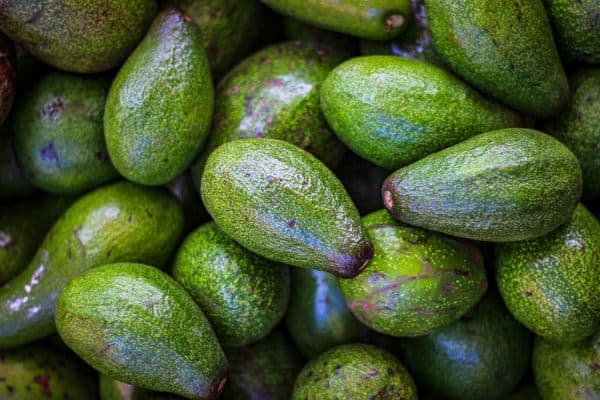
How to Peel an Avocado
To peel an avocado, first remove the small stem, then use a knife to trace a line lengthwise around the entire fruit. Insert the knife into the stem hole until it hits the pit and use the pit as a guide. Then, hold the avocado with both hands and twist one half forward and the other backward to separate the two halves easily.
To remove the pit, strike it with the knife in a swift motion, twist it to the side, and pull up. Finally, to peel the avocado, use a tablespoon to scoop out the flesh by inserting the spoon at one end.
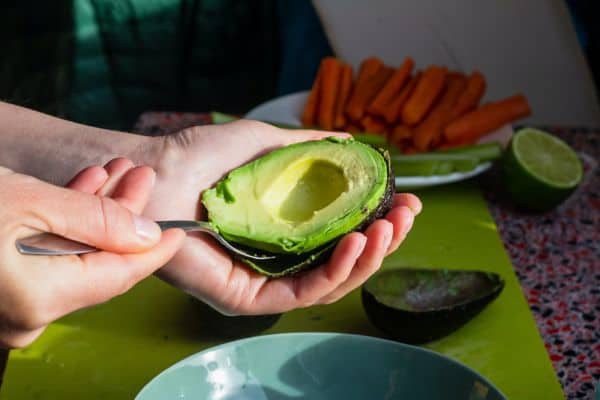
Why Choose La Huerta de Pancha to Buy Avocados Online
If you’re looking for a safe, responsible, and direct way to buy avocados online in Málaga, La Huerta de Pancha offers more than just a purchase—we offer trust, freshness, and certified organic quality straight from the source.
Our avocados are grown in the heart of Axarquía, a privileged region with a subtropical climate that produces some of Málaga’s best avocados. We tend each tree by hand, using sustainable and organic methods that respect the land and the natural rhythm of the crop.
Choosing La Huerta de Pancha means choosing authentic flavor, a personal touch, and the transparency of a family that cultivates with care and dedication. So if you were wondering where to buy avocados online in Málaga, here’s your answer.
Meet the Avocado
Is avocado a fruit? Learn more about this …
This time, we will try to end this discussion. Stay with us and you will be able to discover if avocado is a vegetable or a fruit. In addition, you will know some very useful data related to the properties of avocado and the benefits of consuming it with some regularity.
Avocado, also called avocado
The avocado is one of the best known and most consumed fruits in the world. A magnificent food that boasts spectacular flavor and a characteristically delicious consistency. One of the most exported foods worldwide, and that is of American origin.
It has a very special physical composition, which makes it recognizable for miles. They have a somewhat thick, rough and hard skin. Likewise, when removing this we will come across a creamy yellow filling that has the seed in its center. The latter occupies a large volume within the fruit.
They generally have shapes similar to fruits such as pears, although some varieties come to have shapes more similar to cucumbers or apples. The size usually varies a lot depending on the variety of avocado, but they maintain the bulk of their properties that make them healthy and also their exquisite flavor.
By the Spanish it was considered the “Indian pear” and by the Native Americans it was a powerful aphrodisiac. Its production has been known and dominated for many years, which is why it has become a fundamental part of culinary culture.
Spreads, main dishes, sauces and medicinal preparations are famous all over the globe. Hispanic Americans are the world’s most avocado-consuming citizens, but in a globalised world, anyone can indulge in this delicacy.
It’s a fruit?
Depending on who you ask, you may have one or the other answer. Culturally, some people hold beliefs deeply rooted in their societies. The opinions that affirm that the avocado is a fruit and also those that affirm that on the contrary it is a vegetable are preserved.
At first, the greenish color and the consistency of its pulp are the factors that provoke the existence of thoughts that relate avocados to vegetables.
Likewise, the very high content of fatty acids beneficial to the human body makes one believe that avocado can be a vegetable instead of a vegetable. But the truth is that neither of these two opinions is completely correct.
It’s a fruit, that’s right. The avocado is an exotic fruit that since ancient times has been consumed by our ancestors, and that today does not lose its gastronomic and nutritional validity. The avocado fruit turns out to be one of the easiest to grow and care for.
The avocado tree
What concerns the plants from which the fruits emanate is quite interesting. In the case of the avocado or avocado tree, it is commonly known as avocado tree and whose scientific name is Persea Americana. It is a very easy plant to sow and also to cultivate.
This plant is native to the Mexican nation and contiguous Central American nations. It is an evergreen tree, with shiny and very large leaves with a cluster shape like its flowers. Interestingly, the aguatero is not a self-pollinating tree.
This means that in order for an avocado plant to be productive and bear fruit, it must be planted together with another adjoining avocado plant to pollinate each other. Well-drained soil is required, with a pH close to neutral and fairly light soil.
Likewise, the recommended temperature for the efficient cultivation of avocado plants is between 20 and 23 ° C. It can withstand very low temperatures, but tends to reduce its production during periods of very high temperatures. Of course, it must have a very good source of light.
The care for this plant is not very specific. Watering should be regular, but not particularly demanding. Pruning is not required too often, but you must be very aware of parasitic plants and fungi that appear with some frequency. After sowing, in a period of five years the first fruits of the tree are obtained.
It’s delicious
Let’s be completely honest. Avocado is so widely consumed around the world because it tastes delicious. If this did not exist or the fruit was a bit unpleasant, perhaps we would not want to get the benefits of avocado. However, nature made it so.
Depending on the variety of avocados eaten, the flavors tend to vary greatly. They can be fruits that have a butter flavor or similar, while others can be more acidic and even tasteless. Of course, in most cases it depends on whether the fruit is ripe.
Are there contraindications?
It is natural to ask yourself this question. Food can be very nutritious and everything else, but if there are any limitations for some reason or another, it is better to avoid consuming the substance. Such is the case of avocado, that although it is not prohibitive, you have to know some things.
It is estimated that whoever consumes an average serving of avocado a day is consuming 10% of the nutritional and energy requirements of the day. That is why the greatest contraindication regarding the fruit has to do with people who want or need to lose weight or reduce their measurements.
To maintain a balanced diet it is necessary to evaluate the amounts we consume. People with particular nutritional conditions should consult with their specialist. An improper intake of avocado can cause a multitude of health problems in the person. To be healthy and fit, avocado consumption should not be taken lightly.
Nutritional information
| Nutritional value per 100 g | ||
| Energy 160 kcal 670 kJ | ||
| Carbohydrates | 8.53 g | |
|---|---|---|
| • Sugars | 0.66 g | |
| • Dietary fiber | 6.7 g | |
| Fats | 14.66 g | |
| Protein | 2 g | |
| Water | 73.23 g | |
| Retinol (vit. A) | 7 μg (1%) | |
| • β-carotene | 62 μg (1%) | |
| Thiamine (vit. B 1 ) | 0.067 mg (5%) | |
| Riboflavin (vit. B two ) | 0.13 mg (9%) | |
| Niacin (vit. B 3 ) | 1,738 mg (12%) | |
| Pantothenic acid (vit. B 5 ) | 1,389 mg (28%) | |
| Vitamin B 6 | 0.257 mg (20%) | |
| Vitamin C | 10 mg (17%) | |
| Vitamin E | 2.07 mg (14%) | |
| Vitamin K | 21 μg (20%) | |
| Calcium | 12 mg (1%) | |
| Iron | 0.55 mg (4%) | |
| Magnesium | 29 mg (8%) | |
| Manganese | 0.142 mg (7%) | |
| Match | 52 mg (7%) | |
| Potassium | 485 mg (10%) | |
| Sodium | 7 mg (0%) | |
| Zinc | 0.64 mg (6%) | |
700 reviews for Avocados
Customer Images
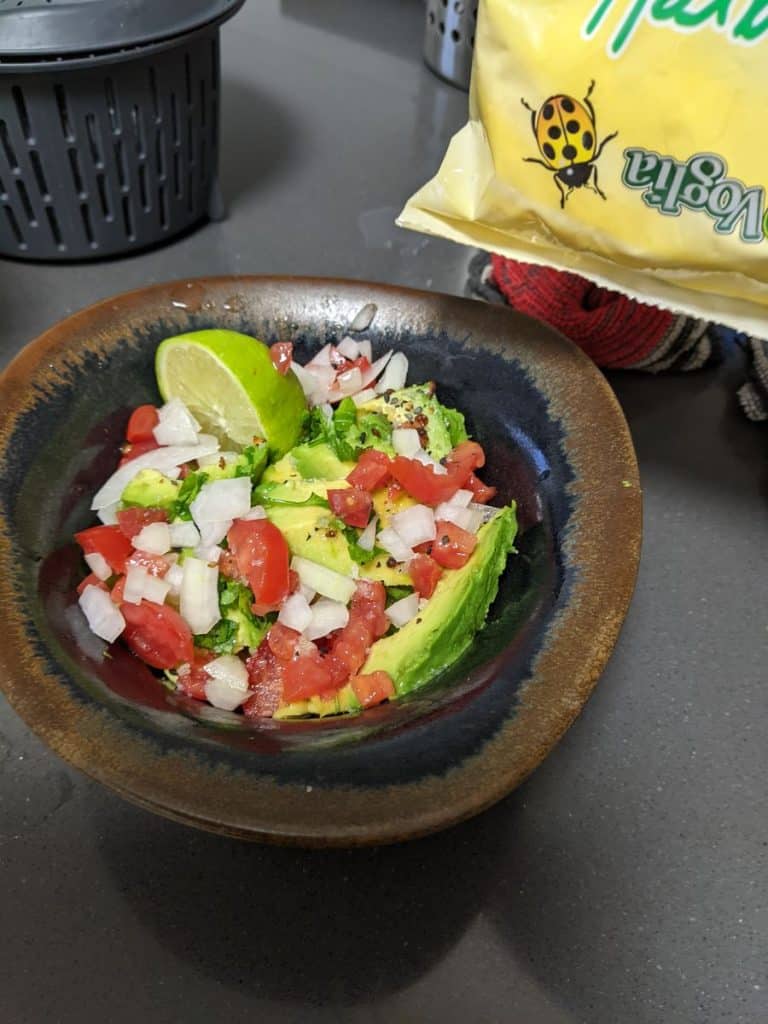

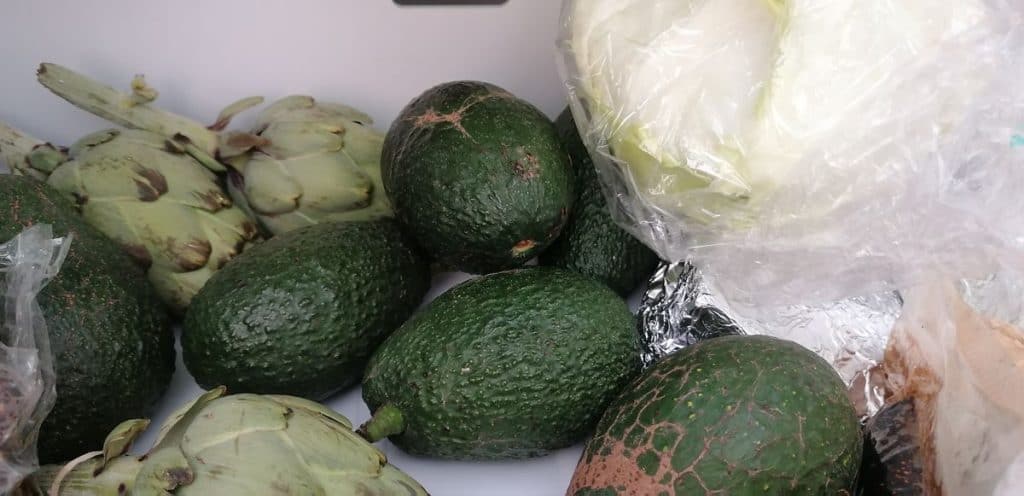


Chancel Z.
Espectacular como siempre

Carmen C.
Calidad saben a aguacate no como los que se compran en supermercados

Maria
Los aguacates tampoco han de faltar en casa.. Los guardo en nevera, saco 2 ó 3 y en un par de días, listos para comer. Pedidos de 3kg.

PASCALE BESOMI
Tal cual, deliciosos!




Sorry, no reviews match your current selections



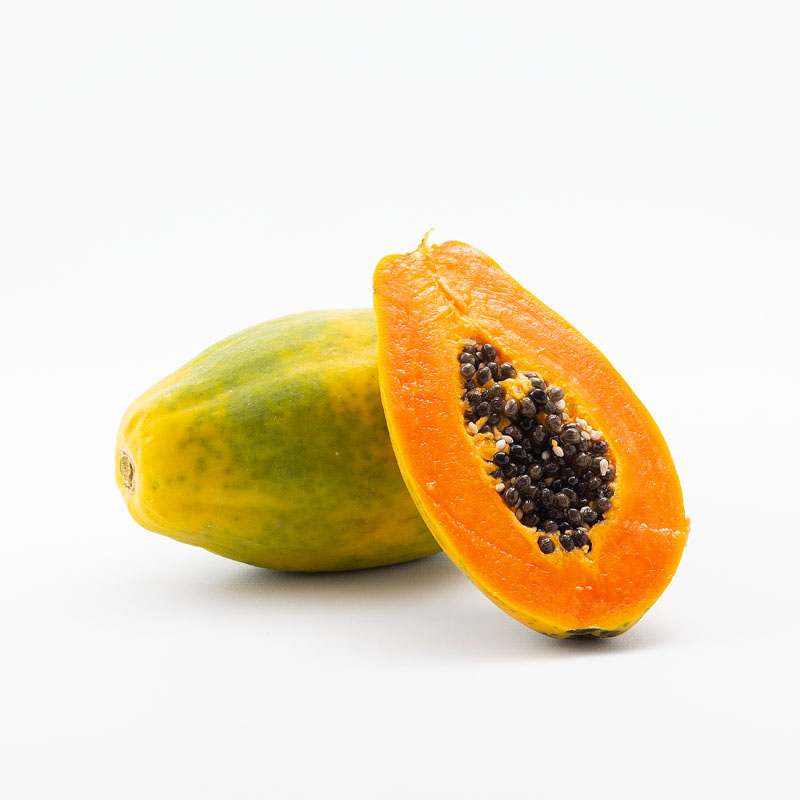
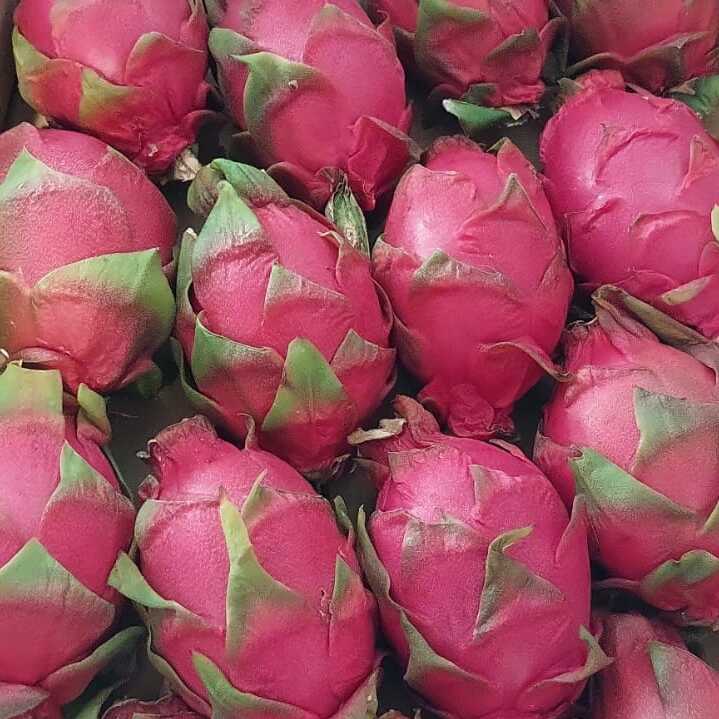
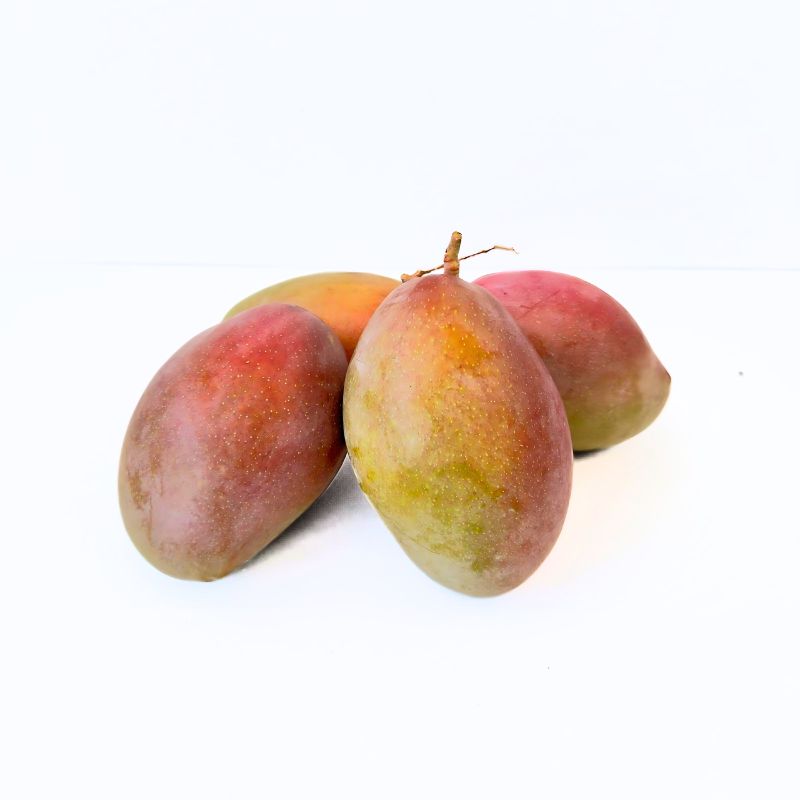
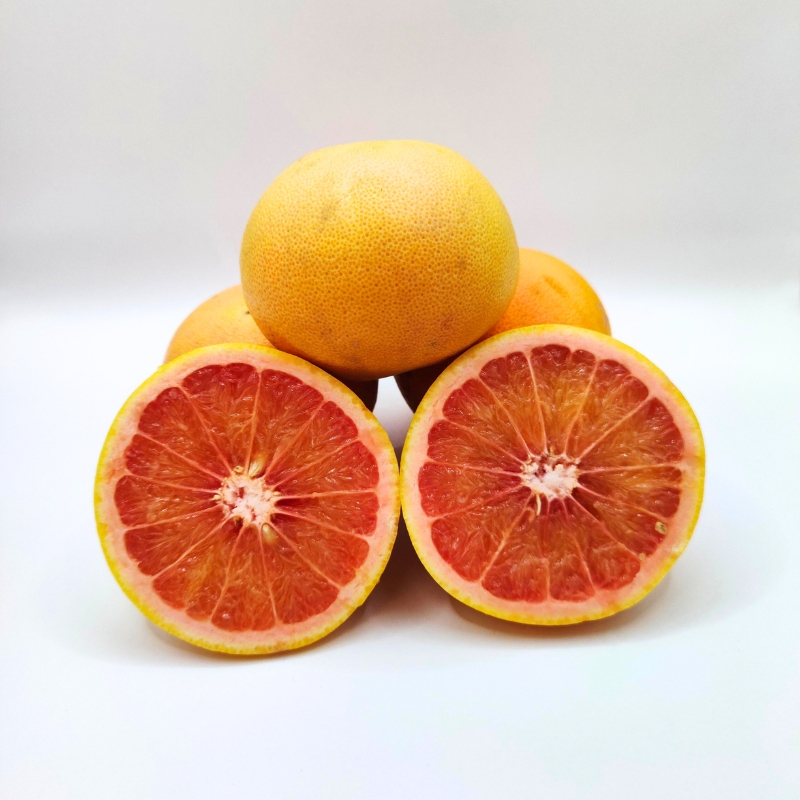
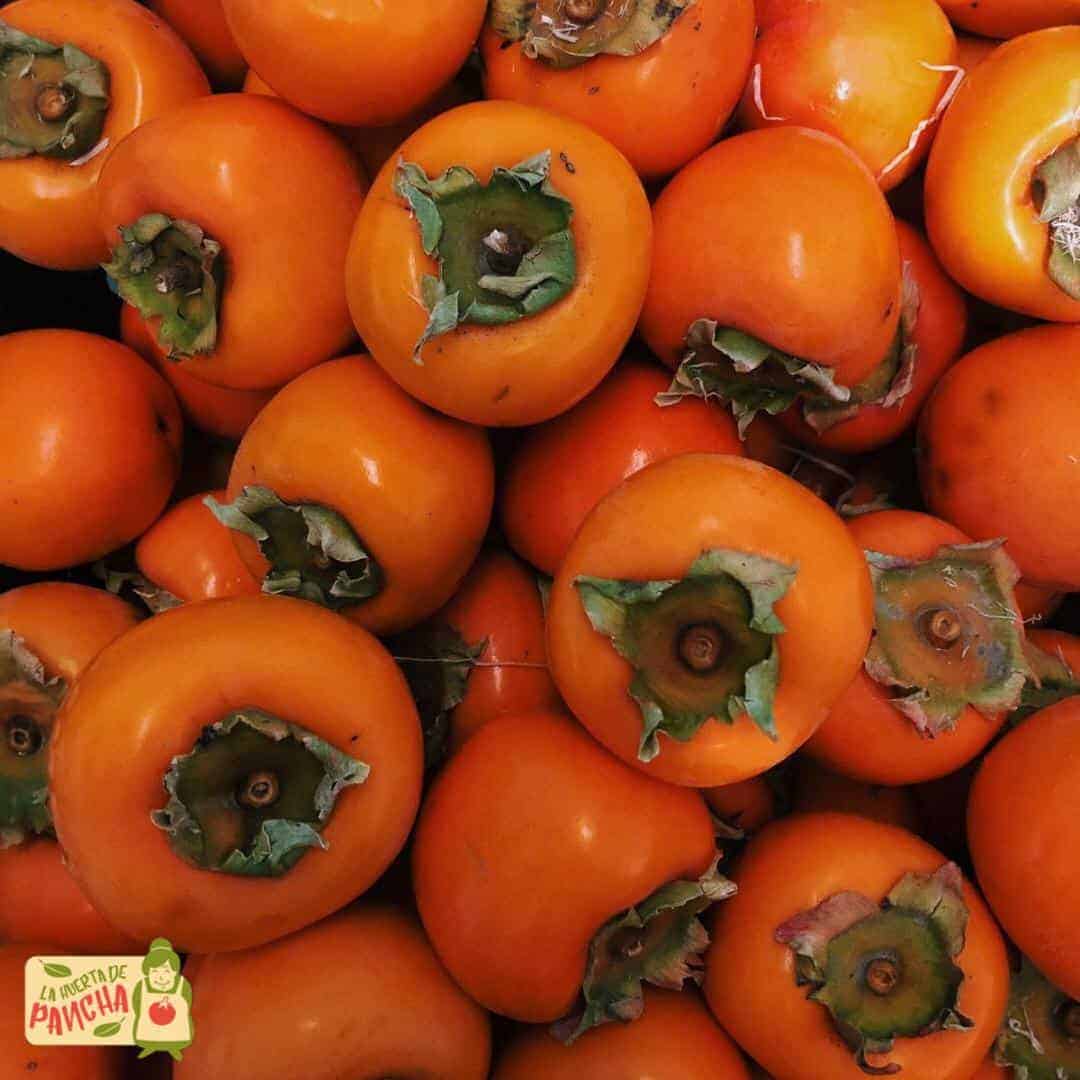



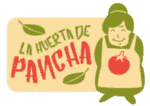
Aguacates que maduran sin golpes ni hilos. Gusto cremoso e intenso.
Buenísimos
Como mantequilla espectaculares
Espectacular
Nos encanta comprar en la Huerta de Pancha! Envío rapidísimo, buenísimo todo y cada producto nos llena de felicidad a todos en la familia. Seguid así!